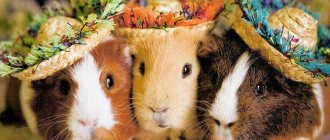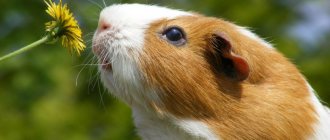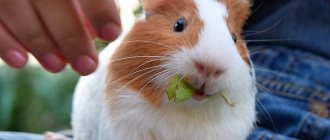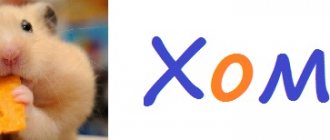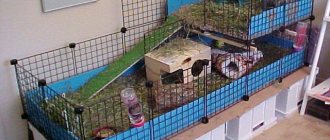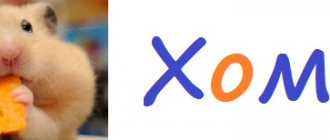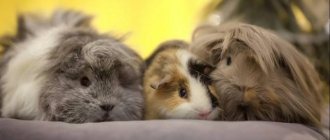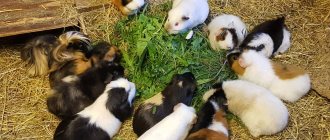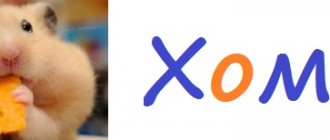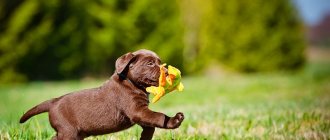Do I need to trim my guinea pig's nails?
In nature, guinea pigs' claws grind down on their own, but this is impossible at home, so the procedure must be carried out by a person. If you do not do this regularly, the consequences may be as follows:
- skin injuries from ingrown claws;
- difficulties in moving, which can subsequently lead to the pet becoming overweight due to low activity;
- injuries to various areas of the skin from scratching with long claws;
- infection due to dirt under the claws and its introduction into the wounds;
- curvature of the fingers, as long claws curl and become rough;
- spinal displacement;
- the appearance of pododermatitis;
- damage to furniture, wallpaper, floors in the house.
Considering all the facts, the answer to the question “Does a guinea pig’s nails need to be trimmed?” disappears on its own.
Carrying out pruning
Grooming takes from 20 to 60 minutes, depending on the skills of the person and the behavior of the rodent. Haste in this matter is dangerous. If you trim your guinea pig's nails incorrectly, severe bleeding will occur and the animal may become ill.
The algorithm for trimming a guinea pig's claws is as follows:
- Gently grasp the first paw without squeezing it. If the rodent pulls out a limb, you should wait 10 minutes until the animal calms down before attempting to trim the nail again. Give a treat to quickly calm the rodent.
- Hold the claw between two fingers and fix its position.
- With your free hand, take the tool and bring it to the nail.
- If this is your first nail trim, take a small flashlight and shine it on the nail. The blood vessel will stand out as a brown spot against the background of the transparent claw. This will make cutting your hair more convenient.
- Start pruning. Take 0.7 mm above the blood vessel. Trim the claws smoothly, without sudden movements.
- Trim your nails one at a time, moving from the big toe to the little one.
- If bleeding begins, stop cutting. You need to put the nippers aside and apply starch to the wound.
- If there is bleeding, at the end of the procedure, wash the wound with an antiseptic solution: starch or hemostatic powder may get into the animal’s food or mouth.
- As soon as the nails have been trimmed, you need to treat the rodent with a treat and return it to the cage. If your pet doesn't take the treat, try again when you return to your home.
When and how to cut a guinea pig's nails?
Nail trimming should be done every two to four weeks, starting when your guinea pig is one month old.
Trimming guinea pigs' nails is not difficult, as there are many nail clippers, electric sharpeners and rodent scratching posts available. At a pet store or veterinary pharmacy, you should buy special tweezers - nail clippers for rodents. Before buying, you need to hold it in your hand and make sure that it is comfortable. If you feel uncomfortable, the risk of injury to the animal increases. There are also electric sharpeners that are considered even safer.
IMPORTANT! There are blood vessels in your pet's claws, so you need to carry out the procedure very carefully.
There are special nail clippers for this procedure.
Water for rodents
The amount of water you drink will depend on the type of food.
For example, in winter, when animals eat a lot of dry food, including hay, they will need quite a lot of liquid. At the same time, in the summer, with an abundance of juicy fruits and vegetables, the drinking bowl will be filled much less often. This does not mean that you can pour water once a week and then not worry about its availability. It should be constantly fresh and clean. Caring owners who wish their pet a long life add vitamins to drinking water. Pigs should not be given water from the tap. The water should be purified, purchased in a store or pre-settled, and its temperature should be comfortable.
Preparation for the procedure
In order for the procedure to be safe for the rodent both psychologically and physically, you need to prepare in advance.
Important! Choose a place with good lighting in advance and arrange all the equipment in the correct order.
Nail clipper for rodents
At a pet store or veterinary pharmacy, you should buy special tweezers - nail clippers for rodents. Before buying, you need to hold it in your hand and make sure that you are comfortable. If you feel uncomfortable, the risk of injury to the animal increases.
Electric sharpener or scratching post
In addition to regular nail clippers, there are electric sharpeners. They are considered even safer for rodents, since it is almost impossible to catch a nerve or vessel with them.
IMPORTANT! It is strictly forbidden to use scissors, either regular or manicure. Their use can cause the animal’s delicate nails to peel.
Hemostatic powder
If a vessel was damaged during the procedure, you should use a hemostatic powder, which is also sold in pet stores and veterinary pharmacies. If it is unavailable, you can use corn starch or chlorhexidine.
ATTENTION! Before releasing the animal, you need to remove the hemostatic powder from the paws so that it does not get into the pet’s respiratory tract.
Towel
A towel is necessary for the animal’s comfort and convenience when holding it during the procedure.
You need to wrap your pet in a towel as soon as you take him out of the cage and turn him with his back to you so that he cannot bite .
Is your rodent good at being handled? The procedure can be made painless for the animal
Combing and grooming
Owners carry out most haircuts when the fur stops looking attractive and tangles appear. To prevent this from happening, you need to provide the rodent with regular care, namely combing your pet.
It is necessary to accustom oneself to such manipulations from childhood; otherwise, an adult animal may simply not allow it to be done, because it simply does not understand what is being done to it and why.
Caring for long hair requires patience; the strands should be moistened and then separated into hairs. Brushes and special combs are used for this. If the procedure is carried out correctly, the animal’s curls will be shiny and luxurious.
When matted fur and tangles are observed, you should wash the area with guinea pig shampoo, and then very carefully try to separate the hairs. Dry the animals using a hairdryer, but you should be careful; not all animals normally perceive the buzzing device and the warm flow of air.
Remember also that tangles cause great discomfort and pain to the animal. If you cannot manage your curls on your own, seek professional help.
Also, the guinea pig needs to regularly trim its claws, which grow quite quickly and, if they are not trimmed, they will curl up and interfere with walking and leading a normal, full-fledged lifestyle.
For this procedure, use a special nail clipper or tweezers that have a short blade. The procedure is carried out 1-2 times a month, but you should be very careful when performing it. Only the end of the claw is cut off; there is a blood vessel in the middle and it cannot be damaged.
How to properly trim a guinea pig's nails
- First of all, the pet must be removed from the cage safely, slowly and without sudden movements, so as not to anger the pet;
- After this, the animal needs to be wrapped in a towel so that it is comfortable, and placed on your knees with its back to you to avoid bites;
- After placing the guinea pig, you should pull the paws out of the towel one at a time and treat each one separately;
- Having secured the claw between your thumb and forefinger, you need to take the device with your free hand and carefully trim the claw without touching the vessel.
- If blood does appear, you should immediately use a hemostatic powder.;
- If, after completing the haircut, there are uneven areas on the nails, you should treat them with a nail file;
- After the procedure, it is recommended to replace the bedding so that dirt from soiled sawdust does not get under the rodent’s trimmed claws.
How to make the procedure as painless as possible
- To understand the exact location of the vessel and not touch it, you can illuminate the claws with a lamp or flashlight and trim only the transparent tip. If your rodent's claws are dark, you can carefully use a nail file to file down the tips.
- In order for your pet's paw to stand straight, you need to cut the claws at an angle without touching the vessel.;
- A rodent should be accustomed to trimming its claws from childhood, one month, then it will get used to it and will stop worrying with age.
- To prevent bites, you can put a muzzle on your rodent for miniature dogs.
- The nails should be trimmed sequentially, moving from one finger to the other, starting from the edge.
- If it’s difficult for one person to hold a pig and trim its claws at the same time, you can try together - it’s faster and more effective . If one holds the rodent, it will be easier for the other to handle the nippers.
- It is necessary to carry out the procedure regularly, because in case of strong regrowth, the trimming process will be more difficult, and the animal will suffer from deformation of the paws.
What to do if your pig is worried?
You need to understand that this is quite a stressful situation for the animal and you need to be prepared for its anxiety. It is important to carry out the procedure quickly, but, more importantly, carefully.
It is best to distract your pet with his favorite treats, such as an apple or celery. If your pet pulls its paw out, there is no need to try to stop it; it is better to wait a few minutes until the animal calms down, and then try again.
If your pet doesn’t want to obey at all, you can trim his claws in the bathroom or kitchen by turning on the water; at this sound, the guinea pig will simply freeze.
When the owner of a pig has doubts about whether or not it will be possible to trim the claws himself, you can contact a veterinary clinic.
Special scratching posts are sold for guinea pigs.
If your pig is worried
If your pet is worried while trimming its nails, here are some tips on how to calm it down.
- If the pig withdraws its paw, do not hold it. Release your paw, pet the animal, calm it down, give it a treat, and then try again. There is no need to pull the paws to make cutting more convenient; you can lightly press on your finger and the nail will “open” to its full length. The rodent should also be given a treat after each treated paw. Thus, the animal develops a trusting attitude towards the manipulations being carried out.
- If there are continuous attempts to escape, the pet is wrapped in a diaper or towel and held tightly.
- You can calm your pet with a distracting technique, for example, offering a treat or moving to the bathroom or kitchen and turning on the water there. At the sound of running water, guinea pigs freeze. You can feed your pet your favorite food throughout the entire procedure if it makes your pet feel calmer.
- If your pet behaves aggressively, use a muzzle for small dogs or cats.
- If you can’t trim your beloved pet’s nails, it’s best to seek help from a veterinarian or pet salon.
Guinea pigs do not require much care, are unpretentious in food and at the same time are ready to please their owners with their attention. But cutting your guinea pig's nails must be included in the list of grooming procedures.
Nail care
To make this not very pleasant procedure for a rodent rare, its living conditions should be brought closer to natural ones.
To do this, you need to buy a scratching post at a pet store or use a rough stone or piece of brick for this purpose, which will contribute to the natural grinding of the claws.
If possible, you can make a pyramid of bricks or stones in your pet’s cage so that he can climb along it and thus sharpen his claws. Treats should be left on top to motivate your pig.
IMPORTANT! Make sure that the pyramid is stable, otherwise this slide may fall on the rodent and cause injury.
Complications during childbirth
Typically, giving birth to a guinea pig does not require much assistance from the owner.
If signs of complications or pathology appear, you should contact your veterinarian:
- the female makes efforts for fifteen minutes, but there is no calf;
- contractions last more than an hour;
- the animal makes too intense screams;
- severe bleeding began;
- there is profuse drooling or foaming at the mouth;
- the fetus gets stuck in the birth canal or goes backwards.
The female itself breaks the amniotic sac and licks the body of the newborn. If the female is inexperienced, she will need help. During the first birth, you sometimes have to help remove the membrane and rub the baby's body with a soft, clean cloth.
Medical examination and basic care
Regular preventive examinations will help avoid many rodent health problems. A healthy guinea pig is active and eats well.
First of all, when examining, you should pay attention to the coat - it should be shiny and without bald spots. There should be no wounds or ulcers on the skin. A healthy rodent's breathing is smooth, without wheezing, its eyes are bright, without any signs of infection.
Caring for a domestic pig is not particularly difficult. Many people can easily cope with this. These recommendations must be followed:
- feeding at a strictly defined time - twice a day;
- cleaning the feeder and changing the water in the drinking bowl - once a day;
- change of litter - once every four days;
- general cleaning of the cage - once every seven days;
- preventive examination - once every three days;
- combing the coat - once every two days;
- claw trimming - once every six months.
All of the above procedures take about two hours a week.
In order for your pig to develop active and healthy, it needs daily walks. You can let it run around the room, but you should be careful not to accidentally press the rodent against the door or step on it. If you want to catch a furry animal, do it quickly and confidently. Place one hand under the pig's butt and grab the back with the other. Pregnant animals and newborn rodents should not be handled.
About the animal
The guinea pig is an unpretentious and funny animal that adapts well to home conditions. Externally, it is much larger than a hamster or a decorative rat. The rodent is distinguished by its cylindrical body shape and sharp teeth. Depending on the breed, guinea pigs are divided into short-haired and long-haired. The color of pets is striking in its diversity: from dark burgundy to silver.
Fluffy “piglets” can be called long-livers. They live 10–15 years. A lot depends on care.
In particular, trimming the claws of a playful animal is a mandatory procedure that should never be neglected.
How often should I do this?
For the first time, guinea pigs' claws are trimmed between 1 and 3 months, when the claws have already begun to bend and grow to the sides. In the future, the need for another procedure is determined by the rate of bone tissue growth; on average, it is performed once every 2–4 weeks, as soon as the length of the claws exceeds 2 mm. After using the hemostatic powder, its remnants must be removed so that the chemical does not get into the pet’s mouth. The most minor consequences of this will be indigestion and vomiting.
Prevention
In any case, it is impossible to trim a parrot's claws without scaring him or causing discomfort. Therefore, you should generally avoid excessive regrowth. There are special devices for this in pet stores. Sharpeners for claws and beaks are made from chalk and other natural materials. With their help, pets can get rid of overgrown length themselves.
You also need to replace all the plastic elements in the cage with wooden ones. Their surface should not be smooth. It is best to add pebbles to the bottom of the home. It is necessary to let the bird fly around the apartment more often
It is very important that the pet’s perch is at least 15 mm thick, because it is by sitting on such a branch that the parrot can wear down its nails naturally
What will you need?
Preparing for nail trimming involves having the following tools.
- Nail clipper, nail clippers or electric sharpener. The last tool can be considered the safest.
- Special hemostatic powder . It can be purchased at stores that stock shaving supplies. It will help stop bleeding if you accidentally touch a vessel while trimming the claws. If the powder is not available, then use a chlorhexidine solution.
- Terry towel . It should be soft and voluminous.
- A small nail file. With its help, irregularities are removed after trimming the claws of a guinea pig.
Please note that it is better not to use nail scissors to trim your pet’s nails. The fact is that they will not be able to instantly shorten the tip, which will complicate the procedure.
